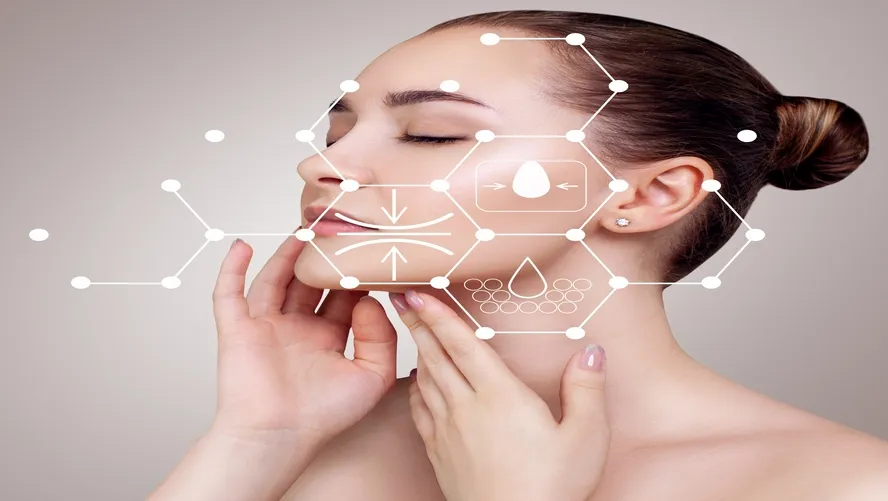
Dermatology is a medical specialty that deals with skin health and diseases. It covers a variety of structures including skin, hair, nails, and mucous membranes (mouth, nose, eyes, and genital areas). Dermatologists specialize in maintaining the health of these structures and diagnosing and treating their diseases.
About the Dermatology Department
The dermatology department provides diagnosis and treatment of all kinds of skin health problems. It provides services in various health institutions such as clinics, hospitals and private practices. The dermatology department not only treats skin diseases, but also provides services in aesthetic procedures and skin care.
Who is a Dermatology Specialist and What Are Their Duties?
A dermatologist is a doctor who specializes in dermatology after completing medical training. Their duties include diagnosing diseases related to the skin, hair, and nails, creating treatment plans, and counseling patients. Dermatologists also specialize in surgical procedures and cosmetic procedures.
What Diseases Does Dermatology Cover?
Dermatology covers a wide range of diseases that affect the skin, hair, nails, and mucous membranes (mouth, nose, eyes, and genital areas). Dermatologists are concerned with diagnosing, treating, and managing diseases of these structures. Here are the main diseases and conditions studied in dermatology:
1. Acne (Pimples)
Acne is a skin disease that occurs when the oil glands in the skin become blocked and inflamed. It usually begins in adolescence, but can occur at any age.
2. Eczema (Atopic Dermatitis)
Eczema is a chronic inflammatory skin disease characterized by dryness, itching and redness of the skin. Also known as atopic dermatitis.
3. Psoriasis
Psoriasis is a chronic autoimmune disease that causes skin cells to multiply rapidly, creating thick, scaly patches on the skin.
4. Vitiligo
Vitiligo is a disease that causes the skin to lose pigment, creating white spots. This occurs when the immune system attacks the skin's pigment cells.
5. Fungal Infections
Fungal infections are infections of the skin, hair, and nails caused by fungi. For example, athlete's foot and nail fungus are common fungal infections.
6. Warts
Warts are small, hard, rough growths on the upper layer of the skin caused by the human papillomavirus (HPV). They usually appear on the hands and feet.
7. Skin Cancers
Skin cancers occur when skin cells multiply abnormally and uncontrollably. There are types such as melanoma, basal cell carcinoma and squamous cell carcinoma.
8. Allergic Reactions and Contact Dermatitis
Allergic reactions occur when the skin overreacts to certain substances. Contact dermatitis is an inflammatory skin reaction that occurs when the skin comes into contact with an allergen or irritant.
9. Hair Loss (Alopecia)
Hair loss is the condition in which hair falls out more than normal and becomes thinner. There are types such as androgenetic alopecia (male pattern baldness) and alopecia areata (round bald areas).
10. Nail Disorders
Various problems such as fungal nail infections, ingrown toenails, nail psoriasis and structural disorders of the nails are treated by dermatologists.
11. Rosacea (Rose Disease)
Rosacea is a chronic skin disease characterized by redness, vascular dilation, and acne-like lesions on the face.
12. Urticaria (Hives)
Urticaria is a reaction characterized by sudden onset of itchy, red and raised rashes on the skin. It usually occurs as a result of an allergic reaction.
Dermatologists diagnose, treat and manage these and many other skin diseases. Different treatment methods can be applied for each disease and various measures can be taken to improve the quality of life of patients.
What Are Dermatology Examinations?
Dermatology visits include a variety of tests and examinations to diagnose patients' skin problems. These visits may include skin biopsies, blood tests, allergy tests, dermatoscopy, and other imaging methods. In addition, information is collected about patients' past medical history and lifestyle.
What Methods Are Used in the Treatment of Dermatological Diseases?
There are many methods used in the treatment of dermatological diseases. These include drug treatments (creams, lotions, oral medications), phototherapy, cryotherapy (cold therapy), laser treatments and surgical interventions. The treatment method is determined depending on the type and severity of the disease.
When Should You Go to the Dermatology Department?
If you notice any changes in your skin, persistent skin problems, new skin lesions, or changes in existing lesions, you should consult a dermatologist. You can also visit a dermatologist for skin cancer screening and skin care advice.
What is Done During a Dermatology Examination?
During a dermatology examination, the doctor first listens to the patient's complaints and takes a detailed history. Then, a physical examination of the skin, hair and nails is performed. If necessary, additional tests such as a biopsy, blood test or allergy test may be performed. As a result of the examination, a diagnosis is made and an appropriate treatment plan is determined.









